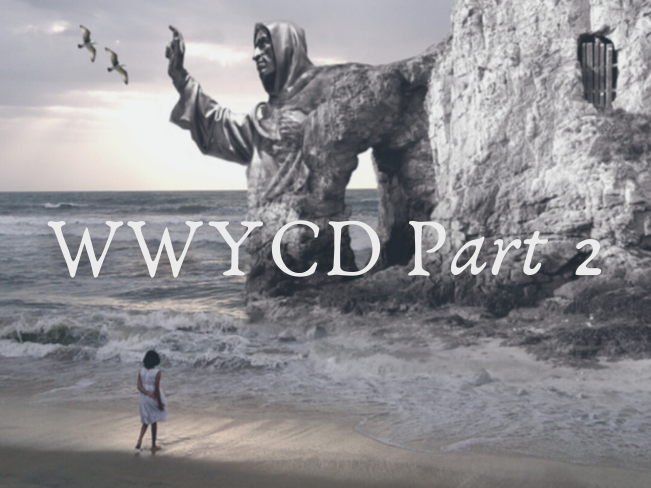
Have you ever…
…gotten to a scene were two of your characters are in conflict and second-guessed how one of them would react?
…tried to put action beats into dialogue and ended up with three guys debating the zombie apocalypse while repeatedly rubbing the backs of their necks?
…received feedback from a beta that they didn’t find your character’s response to a situation authentic or in-character enough?
…been told that your side characters all sound the same?
I sure have. Multiple times.
There’s no secret recipe to avoiding these issues. Like everything in writing, all we have are tools and aides that, if structured properly, help us draft (or self-edit) our way through our most common problems.
The most popular tool for the above is the character sheet: an accumulation of facts and backstory that gives the full scope of who our character is and why. Some of us swear by character sheets, some of us have never made a single one. I’m somewhere in the middle. The information makes it into my writing notebook, but never on a single page.
(For the record, this is why I use disc binders as writing notebooks. It’s much easier to create order out of chaos when you can move your pages around.)
The problem with character sheets?
They’re so long.
I’m an easily derailed drafter. If I’m getting stuck on a bit of dialogue, a reaction, or a tic, I’ll slip back into my character notes to help. Instead of helping, though, I often lose myself in the weeds of a character sheet. Next thing I know, I’m down a rabbit hole about what happened to their pet cat when they were eight, an hour has passed, and no new words have hit the drafting page.
Distraction aside, character sheets are so complex and all-encompassing that they don’t often answer the question I have, which boils down to: “what is this character going to do?”
So how do we distill pages worth of character notes into brief, actionable shorthand that helps us answer our drafting questions?
I tried a new tip the other day that I really enjoyed and want to share with you.
Character Notecards
For those of you who (like me), hate index cards thanks to a subliminal association with vocabulary tests, hear me out. These don’t need to be notecards. They can be post-its, stickers, magnets, a beautifully illustrated flowchart—
Point is, you need something that’s:
- small
- easy to glance over with a single eye-sweep
- posted to the wall over your desk (or inside the cover of your notebook, or pinned as a note on your desktop – the world’s your oyster).
I’m going to keep calling them ‘notecards’ for the sake of simplicity, but understand that this refers only to whatever base unit of whatever system you’ve devised.
“But Cee,” you might say, “aren’t notecards just a different format for the same set of information?”
Not necessarily.
The questions at the top of this post point to an action/reaction problem. We might know exactly who our characters are after doing pages upon pages of diligent personality profiles. We might hold the blueprint to their being in our heads. (Or we’re shoot-from-the-hip pantsers learning character as we go – in which case I say: you are brave, friends. Very brave.) Yet none of that tells us what our character is going to do. It tells us only why our character is who they are.
The problem with expansive, general frameworks? It’s very easy to get bogged down in them. If our issue is figuring out a concrete, authentic action/reaction for our character to take, then we need to start at action’s very root:
Verbs.
Pick a Verb, any Verb…
Grab your first notecard. Write your protagonist’s name on top.
Now, below their name, write one verb that describes that character’s most essential nature.
You might be saying “Cee, don’t you mean adjective?” Nope. I mean a verb: only an action word for your action/reaction problem.
What is your character always doing? What are they driving towards? What role do they assume in pivotal scenes? What character do they play in group settings, in conflict, at parties?
For example: Samwise Gamgee from The Lord of the Rings is a loyal bean who spends the entirety of the series looking after Frodo. Great – now let’s rephrase that into verb form.
Sam is protecting. If I used a second verb, I’d pick caretaking.
(LotR fans might argue about the order here, but let me off the hook for a second – I’m just tryna provide an example.)
What is your character always driving towards? What are their primary motivating verbs? This isn’t meant to encompass the sum total of their character, but you do want to make an attempt to strike at their core.
Once you have 1-3 verbs written down, prop the card next to your writing station. Take a moment and look at it.
Now think about the scene you’re having trouble with. Is your character acting / speaking in line with those action verbs? If not, what would bring them more in line with your chosen verbs? Or: if they must act this way for the sake of the story, have you done a good enough job setting up a scenario that forces them to act contrary to their nature?
Again, this isn’t a cure-all, but I find it to be a helpful tool. Whenever I’m writing, I have actionable words describing my character’s most essential nature sitting right in front of me. If their action/reaction cycles get muddy, I can refer back to what they should be doing, based on their core being at any point in time.
That goes doubly true when that character gets thrown into the mix with another.
We could say Frodo is sacrificing, or that Pippin is taking risks, perhaps – both actions that come into direct conflict with Sam’s protecting, caretaking. If all of those characters stay true to their essential natures within a given scene, the friction between them will become immediately evident as soon as a catalyst enters the picture and throws their equilibrium off-kilter.
External plot prompts Pippin to take a silly risk? Frodo (sacrificing – no conflict) is a lot more likely to forgive, while Sam (protecting – big conflict) will be substantially more upset.
On side-characters:
Side-characters often boil down to a single verb – especially if they play only one concrete role in the story. The crux of creating fleshed-out side-characters lies in allowing that verb to throw them into conflict with the protagonist.
Make sure your side-characters hold to their verb, even when (especially when) it’s inconvenient.
When our betas accuse our side-characters of being one-dimensional, conflict – or lack thereof – is often the culprit. Instead of relying on an internally consistent set of motivations that drive action, they become props to aid (or thwart) the protagonist in all of their endeavors. Allowing them to flip from aid to neutral force to impediment based on their motivating verb will make for much stronger side-characters. Only then will they feel like the protagonists of their own stories (even if we don’t get to read those stories).
It’s also a great tool for helping us add authentic conflict at the scene level when the major antagonist is absent!
Notecards and character growth:
One of my favorite things about these notecards is how they help track character growth.
Some of our characters start off as one verb, but transition to another by the end of the story. This isn’t a necessary aspect of character growth, mind. A protag can have an immense growth arc even within a verb (protecting, protecting) but change how they approach that essential aspect of their nature.
Yet when the verb changes, it’s huge (provoking to peacemaking, for example). Thinking about this shift – and where the character is on their journey from one verb to the other – can help us plan authentic character growth arcs.
Like everything else in fiction, it’s easier to write the beginning and end of these growth arcs than it is to write the middle. I approach the muddy middle by creating a sliding scale like this:
<—provoking ——– ch. 5 ——– ch. 10 ——– ch . 15 ——– peacemaking—>
It’s not fancy, but it helps me visually identify where the character is in their transition. That helps me pick a verb to calibrate their character’s response accordingly.
This is especially (massively!) helpful when writing an antagonist’s heel-faced turn.
Your mission, should you choose to accept:
Make notecards for all characters with a significant role in your plot, including side-characters. Answer the following questions for yourself – and feel free to share your answers in the comments!
Do your characters keep the same verb for the whole story? If so, does the way they express that verb change?
If your character’s verb changes, when does that change happen? Can you make a scale like the example above?
Pin your notecards to your wall / desk / Scrivener file / whatever. Have a look at all of them together. What conflicts jump out at you from first glance? Which characters are more likely to form alliances based on their internal motivations and tendencies?
Think about the major catalysts in your plot. How will those determine the way each of your character’s verbs are expressed?
Can you identify any areas in your current story where your character arcs counter the verb on the card? Was it intentional? Do those scenes work, or will they need alteration?
Now go back to the scene that started all of this trouble to begin with. Does having this verb list help you with your block?
If not, stay tuned for my next post where I’ll detail a few other quick and dirty tricks you can include on your notecards.
 Worldbuilder’s Disease: Writer’s Block
Worldbuilder’s Disease: Writer’s Block Worldbuilder’s Disease: Devil’s in the Detail
Worldbuilder’s Disease: Devil’s in the Detail WWYCD Part Two
WWYCD Part Two
[…] ‘WWYCD Part One’, I shared a tool for getting unstuck when character motivation and behavior has us struggling to […]